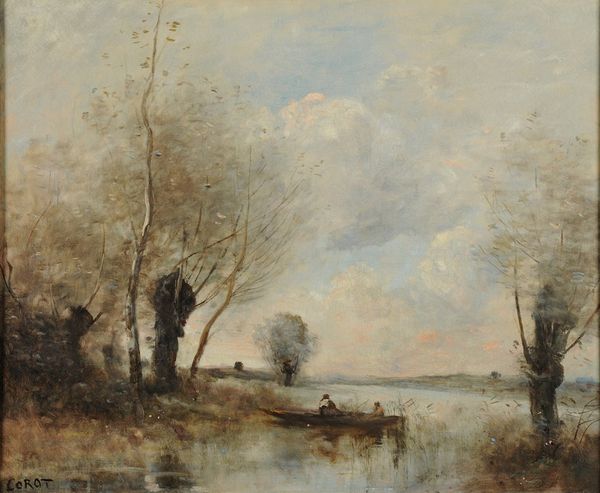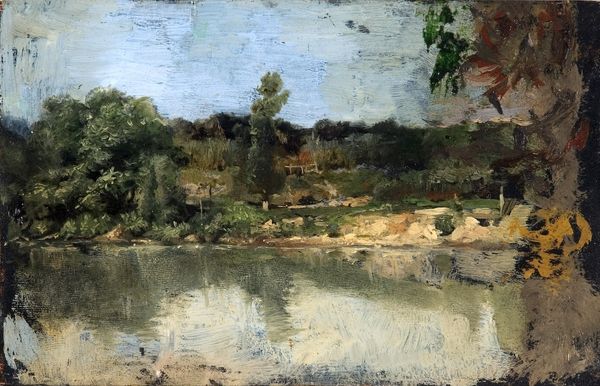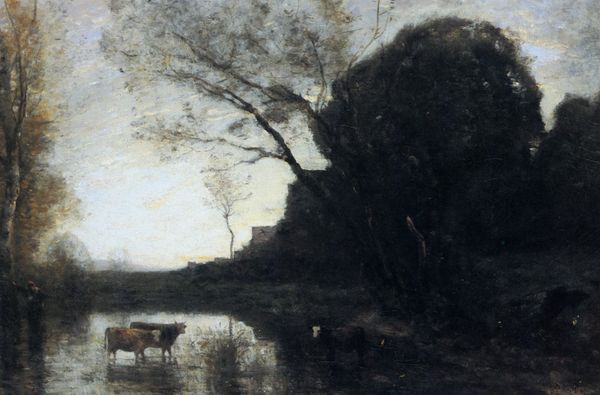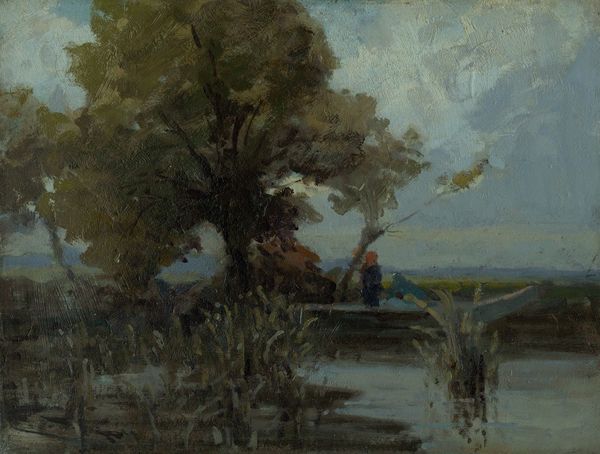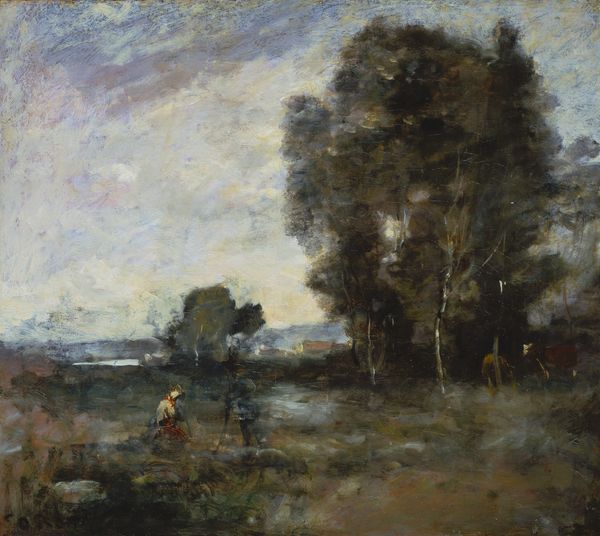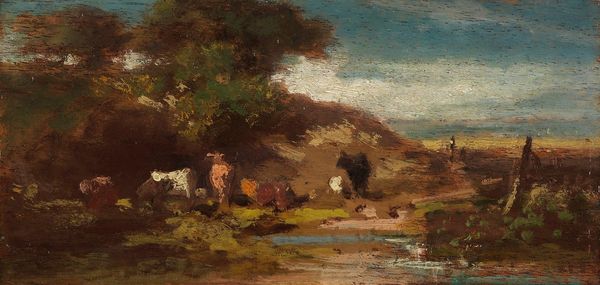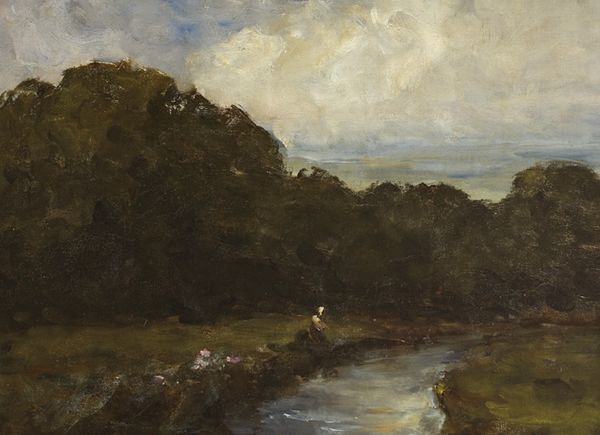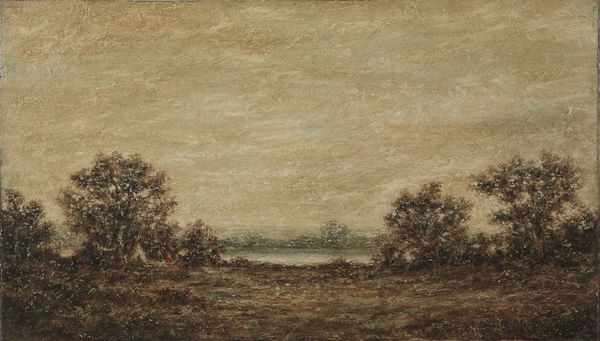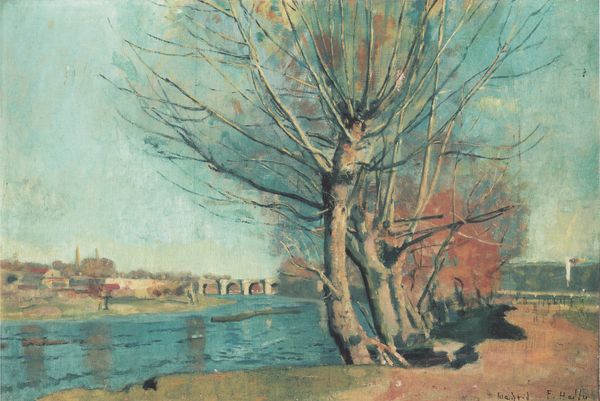
Dimensions: 27.3 x 45.1 cm
Copyright: Public domain
Curator: Welcome. We are standing before Camille Corot's "Marshy Pastures," an oil on canvas painting completed around 1870. Editor: It's subdued, isn’t it? Almost monochromatic. I get a feeling of stillness despite the suggestion of movement in the sky and water. There is a quiet melancholy, very calming. Curator: Corot was indeed known for his subtle tonal harmonies and feathery brushstrokes, characteristic of the Barbizon school and a precursor to Impressionism. His plein-air technique really captured fleeting moments of light and atmosphere. The subdued palette you've observed isn't just a stylistic choice. The use of oil paint allows Corot to work the land, to reflect on his experience, his toil. What you are observing are traces of labor. Editor: And the iconography! Beyond the painterly technique, the scene speaks of pastoral life, idealized. Note the figure guiding an animal through the marsh – it’s an age-old representation of man's relationship with nature, and his reliance on it. We have this sort of biblical shepherd leading his flock, with that feeling of simple rustic virtue. The reflections of figures and the distant village contribute to that sense of harmonious integration with the environment. Curator: Absolutely. It highlights the production—the labor in that agrarian setting. You can almost feel the weight of the materials, the presence of the cow, the worker guiding it, the marshland itself yielding sustenance, a place that both facilitates work and constrains movement. The social conditions that bind us to certain modes of living. Editor: And the overall composition reinforces the idea of nature's embrace. The low horizon line, the overarching trees… these visual devices create a sense of intimacy and enclosure. The viewer feels immersed in this humble scene. There’s almost a sense of protection. Even that overcast sky seems gentle rather than foreboding. It’s Corot using familiar symbolic vocabulary to suggest serenity and timelessness. Curator: A timelessness that belies the specific economic and material realities of agricultural labor in the 19th century. But, I think the effectiveness of "Marshy Pastures" lies in how it obscures that labor—makes it palatable, romantic even. Editor: A compelling counterpoint to its serene imagery. It encourages me to reconsider these images from my past, and how they connect with the memory that shapes my values today. Curator: Indeed, examining how these scenes were produced and for what purpose prompts deeper consideration of how the materials were organized. Thanks for helping us unravel the threads of history and craft in Corot's work!
Comments
No comments
Be the first to comment and join the conversation on the ultimate creative platform.
